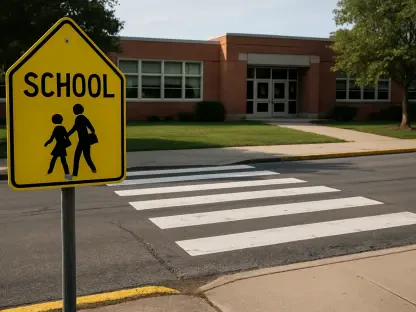Imagine high school graduates not just walking away with diplomas but with skills and work experiences that set them apart in the job market. Indiana’s latest educational reform aims to make this vision a reality by introducing a new diploma mandate that integrates work-based learning into graduation requirements.
Bridging Education and Employment
Indiana’s evolving workforce needs have sparked significant changes in high school education, pushing for greater career readiness among students. The new diploma requirements reflect the belief that hands-on experience during high school will better prepare students for future employment, higher education, or military service.
Unpacking Indiana’s Diploma Requirements
Replacing the Core 40 diploma prerequisites, Indiana’s new requirements introduce three distinct seals: Enrollment, Employment, and Enlistment. These seals demand students to complete set work hours or public service hours in addition to traditional academic achievements. An “Honors Plus” tier exists, setting higher minimum requirements for work-based learning participation.
These changes, set to affect the Class of 2029, require strategic coordination among educators, businesses, and local governments to support students through this transition.
Work-Based Learning in Lafayette
Greater Lafayette Commerce (GLC) has made strides in implementing career-connected learning initiatives, such as career chats, skills boot camps, and work-based experiences. These programs aim to give students valuable exposure to local businesses. Collaboration with Skyepack has led to a “locally created” graduation pathway that promotes student engagement in career-oriented learning. Reports indicate over 10,000 student engagements with local employers, showcasing promising involvement and scalability in line with the new diploma expectations.
The Lafayette School Corporation already incorporates work-based learning in their curriculum, allowing students to earn up to 15 hours per week through a capstone course. This proactive approach places the district in an advantageous position as they navigate the upcoming changes.
Insights from Experts and Beneficiaries
Educational leaders and local business partners are optimistic about the benefits work-based learning offers. Katie Reckard from Lafayette School Corporation notes the practical insights students gain about various career paths, enhancing their employment potential. Similarly, Kara Webb from GLC speaks to integrating the new requirements seamlessly into existing frameworks, indicating a strong foundation for future adjustments.
From an actual student’s perspective, hands-on experience through existing programs has proven invaluable, equipping them with relevant skills and boosting confidence in their career choices.
Implementation Strategies
Effective implementation of the new diploma mandate will necessitate systematic planning and robust tracking mechanisms for student work hours. Schools must explore scalable strategies for integrating work-based learning, utilizing technology and collaboration to streamline administration.
Taking deliberate steps over the transition period will be crucial. Educational institutions, businesses, and community leaders are expected to fine-tune their systems, ensuring efficiency and alignment with the new state directives.
Moving Forward
The collective efforts and forward-thinking strategies adopted in Greater Lafayette highlight the promise and practical challenges of integrating work-based learning in high school education. By fostering dynamic and relevant learning experiences, Indiana aims to equip students better for various post-graduation pathways.
In achieving this goal, stakeholders are called to act, leveraging their insights and resources to facilitate this educational reform successfully. As the region sets an example, broader adoption and refinement are anticipated, leading to well-rounded graduates equipped for the real world.









